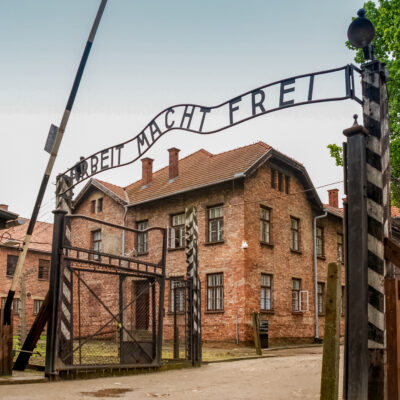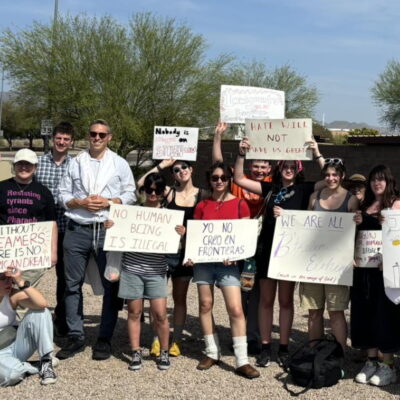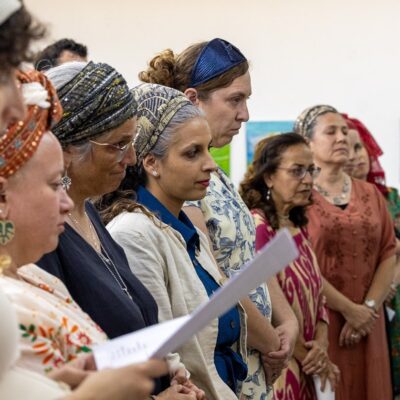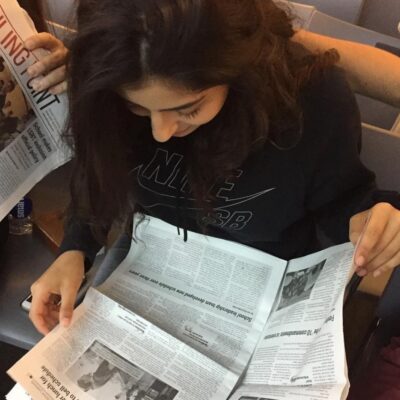Opinion
Jews the Ever Dying People: A Reform Perspective on the Pew Study
by Rabbi Dan Moskovitz
The historian Simon Rawidowicz wrote a famous essay in which he described Jews, with our constant fear of extinction as the “ever-dying” people. He wrote the essay 27 years ago, does that make him wrong or prophetic?
It seem that every few years, a major Jewish leader or study proclaims the “disappearance of the Jews,” arguing that assimilation and intermarriage place the future of the Jewish community – Jewish continuity – in serious danger.
Such was the case with the publication of the Pew Survey on Jewish Americans. A study that quickly rang the alarm bells of the ‘ever-dying Judaism in crisis contingent’. Amidst this 200-page report, the most complete survey of the American Jewish community in more than a decade, provocative statistics blared with shocking though not really surprising numbers.
The intermarried rate among Jews who married in the last 10 years is 58%.
Two-thirds of all Jews don’t belong to a synagogue.
The fastest growing cohort in the Jewish community is the 22% of all Jews who define themselves as Jewish but not religious.
This last statistic led to the other major headline of the study: While 93% of Jews 60 and older define themselves as Jewish by religion, only 68% of Jews born after 1980 identify as Jews by religion. Moreover, 32% describe themselves as having no religion, identifying instead as Jewish on the basis of ancestry, ethnicity or culture. Alan Cooperman, deputy director of the Pew religion project, put it this way, “Older Jews are Jews by religion. Younger Jews are Jews of no religion.”
This last category, young people who define themselves as Jews of no religion, what we would call cultural Jews, are by an overwhelming two-thirds majority also not raising their children in any religion.
The survey moreover found that approximately one-quarter of people who were raised Orthodox have since become Conservative or Reform Jews, while 30% of those raised Conservative have become Reform Jews, and 28% of those raised Reform have left the ranks of Jews by religion entirely. Significantly less movement is reported in the opposite direction.
The upshot of these two last data points: ‘Cultural Jews raising their kids without religion’ and ‘the steady decline in Jewish practice from one generation to the next’ led to a disturbing conclusion. Once Jews no longer define themselves as Jewish through religion, it is highly unlikely that they or their children ever will again. In short, when Jews walk away from shul they don’t come back.
So what are we to do with this information? If the sky is falling how do we hold it up?
One response is to go back to Rawidowicz’ thesis, ‘Jews – an ever-dying people;” and see there in the looming demise of the Jewish people a silver-lining. His premise was that crisis is ‘good for the Jews’. That seems ironic, I know, but a close look at Jewish history ancient and modern shows that we are good in a crisis, as bad as they are for us in the short term. In fact, we are in large part defined by our crises.
We should embrace this survey as the canary in the coal mine that it is, and redouble our efforts to right the sinking ship. In the same way that the Yom Kippur War united Jews across denominational lines, that the cause of soviet refusenicks – empowered the Jewish federation movement, that a halt of Jewish teens traveling to Israel during the first and second intifada gave birth to birthright and the overwhelming statistic also found in the PEW study – that 70% of the Jewish population of the US has traveled to Israel. We not only make lemonade out of lemons – but with good crisis management we open a juice bar.
We should do that AND we should do something else.
The Pew Study also found that most non-orthodox Jews enter and exit religious Judaism through the Reform Movement. Reform Judaism is unique among the major Jewish movements, it gets them ‘coming and going’. Thus Reform Judaism has the opportunity to save Jews before they leave by providing meaningful religious experiences in a modern relevant context. Likewise with its low threshold for acceptance; Reform Judaism is an ideal entry point for a cultural Jew to explore a religious identity.
The metric for an active, committed and engaged Reform Jew is not religious practice as it is commonly defined and understood in the other movements. How often you come to shul to prayer is not a measure of how important Judaism is to you in your daily life. Rather in Reform Judaism we proudly teach that you can be Jewish in a myriad of meaningful ways that are not ‘religious’ in the way that organized religion is off-putting to Millennials. Through study, social action, social justice, connection to Israel, Jewish music, art and culture – experiences that are open to any kind of family – Reform Judaism takes Judaism beyond the walls of the synagogue and into the 21st century of modern life.
When asked about activities or beliefs that are “essential” to their Judaism, the most common answer in the PEW survey was “remembering the Holocaust” (73%); “leading a moral and ethical life” (69%), “working for justice and equality” (56%) and “Caring about Israel” (43%). Just 19% of the Jewish adults surveyed said observing Jewish law (halachah) was essential to what being Jewish means to them. But Pew didn’t just survey Reform Jews! The results just look that way. This survey of Jews across the board clearly shows that Reform Jewish priorities are in alignment with how the majority of Jews view modern Jewish values.
There are challenges for sure:
- Synagogue membership is declining overall. Roughly four-in-ten U.S. Jewish adults (39%) say they live in a household where at least one person is a member of a synagogue. Fifty percent of Conservative Jews belong to a synagogue, and only 34% of Reform Jews belong to a synagogue.
- Intermarriage is increasing and leading to generations of religiously disconnected Jews, especially among the Reform population. Half of Reform Jews who are married have a non-Jewish spouse and intermarriage is much more common among Jews who are themselves the children of intermarriage. Our principled and strategic response must be to embrace these families with open arms not shun or ignore them.
- Reform Jews are generally less involved in Jewish life than Conservative or Orthodox Jews. We must deepen engagement in the richness of Jewish life, not just for school children but also for every Jew. And we can’t wait for them to walk in our doors. We have to go out and meet them where they are.
It is said, though not entirely accurately, that when asked why he robbed banks, the notorious prohibition era bank robber Willie Sutton replied, “That’s where the money is.”
Well, Reform Judaism is where the Jewish identity is. We are the front line in the fight for the Jewish future. What Reform Judaism does at this time in history will tell the tale of what becomes of the Jews, our ever-dying, yet also ever-resilient people.
Rabbi Dan Moskovitz is the Senior Rabbi of Temple Sholom, a traditional Reform Congregation in Vancouver British Columbia, Canada. Follow him on twitter @rabbidanmosk













